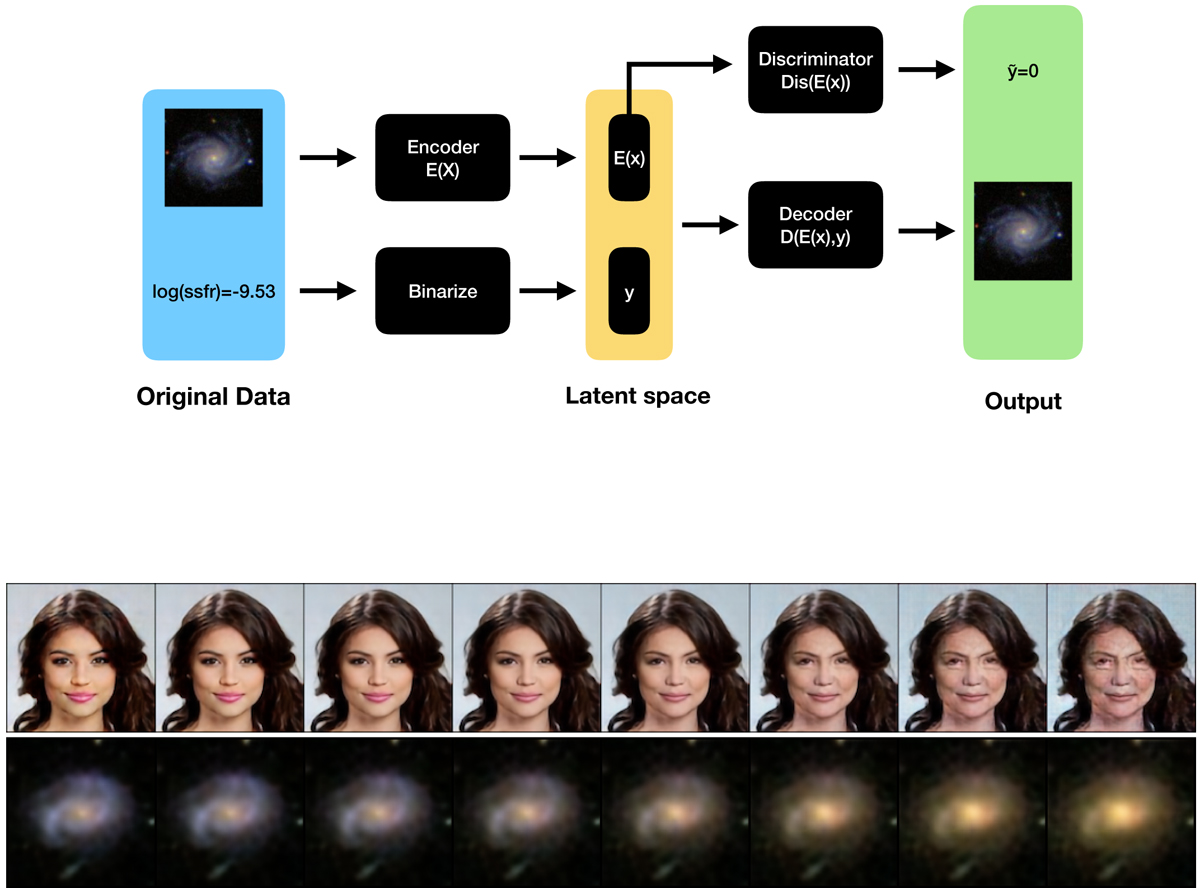Fig. 1.

Fader network architecture: Original galaxy images are input to an encoder E(x) which performs a mapping to a latent space of fixed dimension. The associated physical property is binarized into a label y. The parametres E(x) and y are input to a decoder D(E(x), y) which tries to reconstruct the original input image. The discriminator Dis(E(x)) tries to predict the label y from the latent code E(x). Below, we show two examples of changing a single attribute in latent space using a fader network: the aging of a human face learned from age labels (using a pretrained model; Lample et al. 2017), and the lowering of the sSFR of a galaxy using sSFR labels.
Current usage metrics show cumulative count of Article Views (full-text article views including HTML views, PDF and ePub downloads, according to the available data) and Abstracts Views on Vision4Press platform.
Data correspond to usage on the plateform after 2015. The current usage metrics is available 48-96 hours after online publication and is updated daily on week days.
Initial download of the metrics may take a while.


